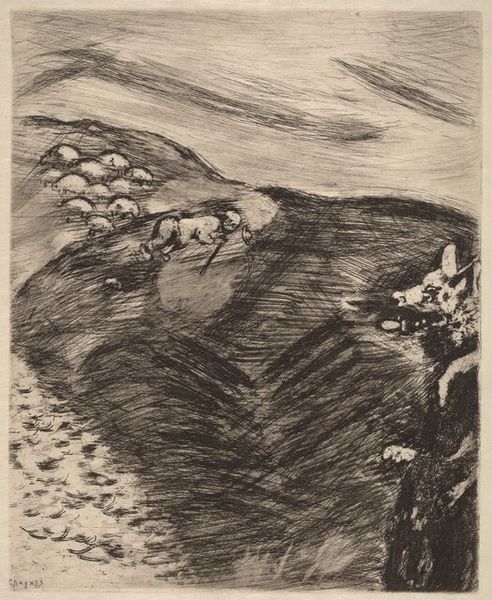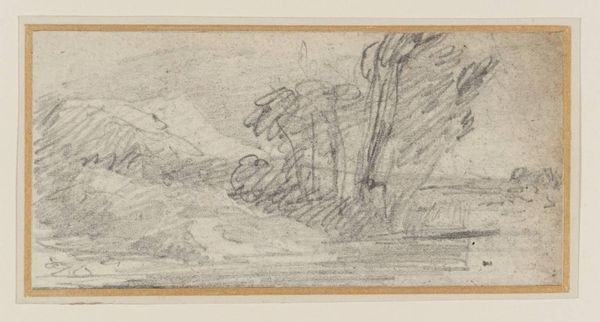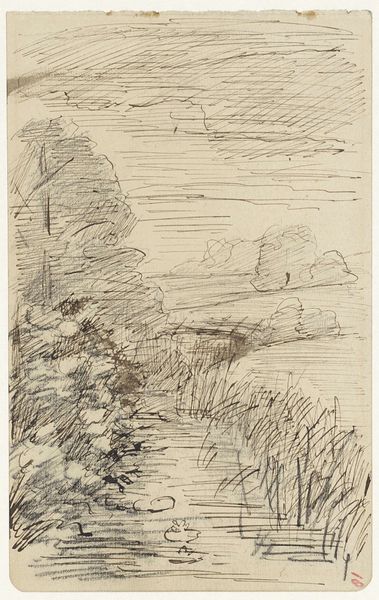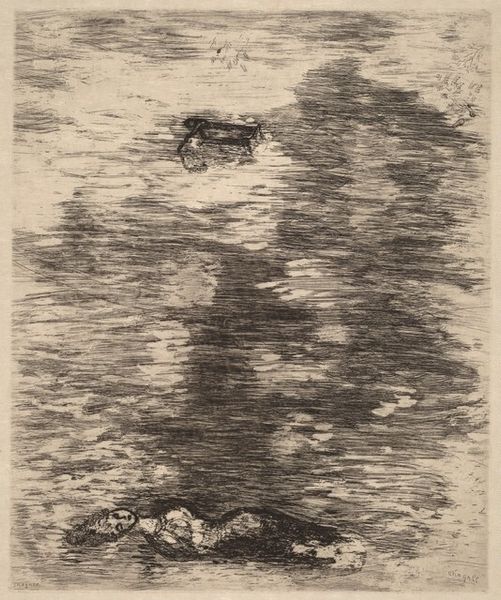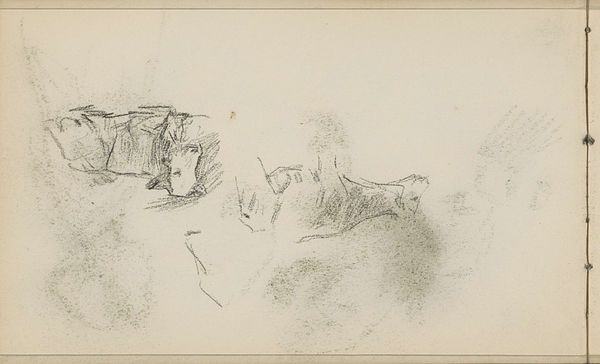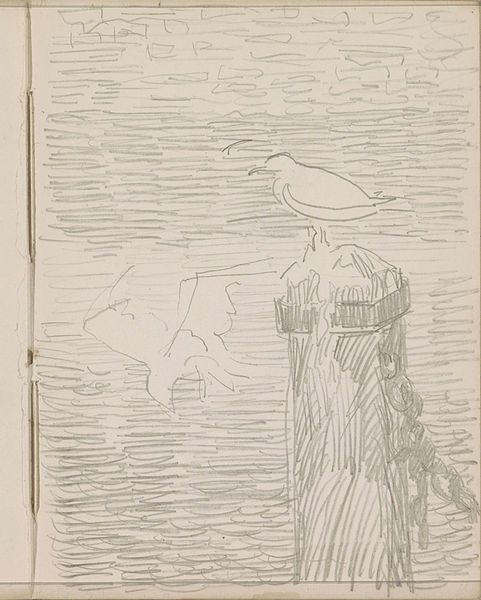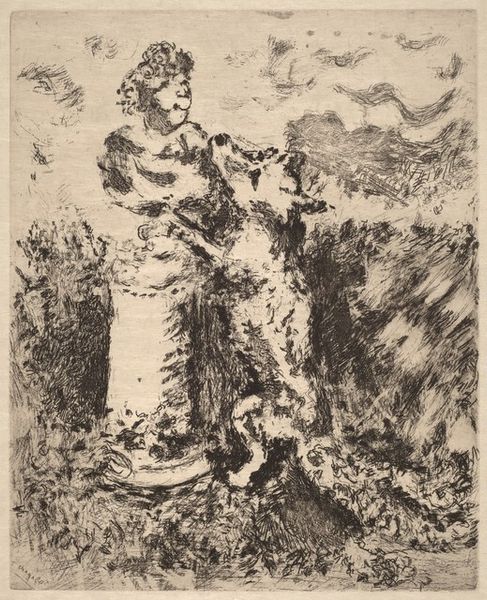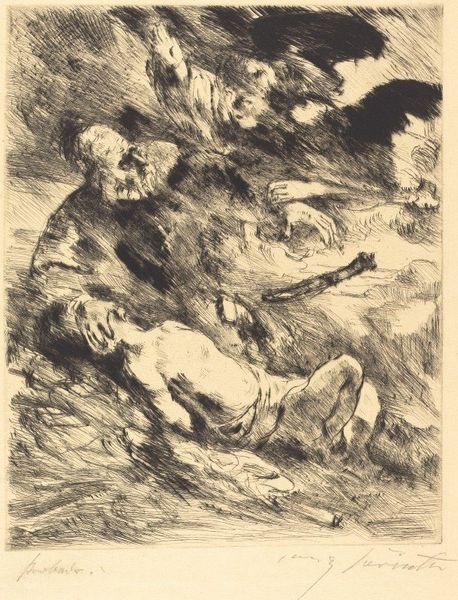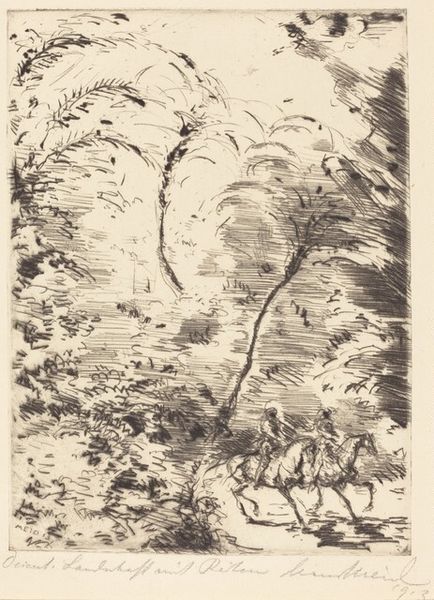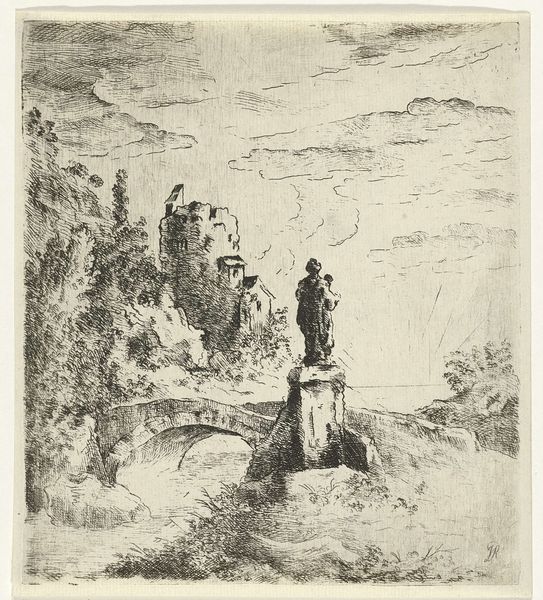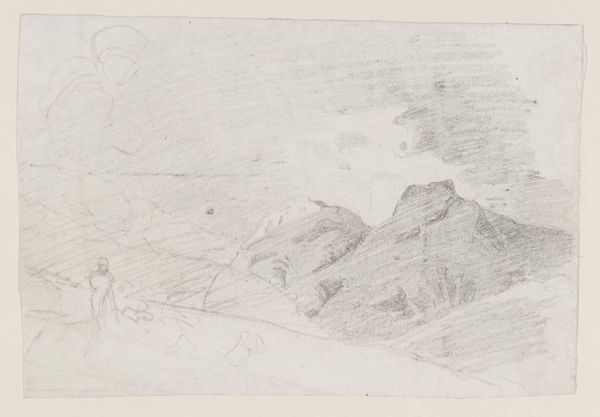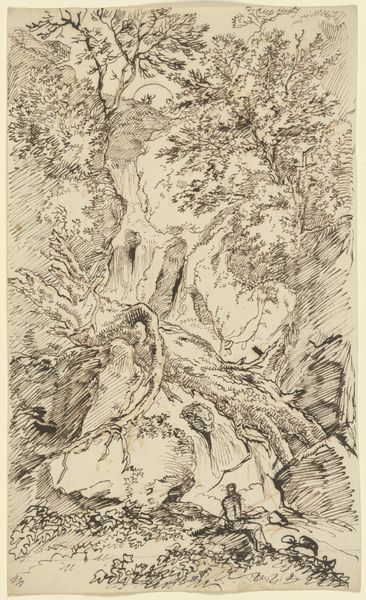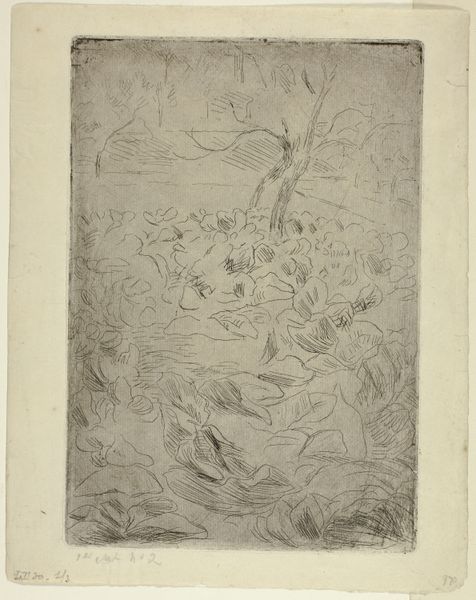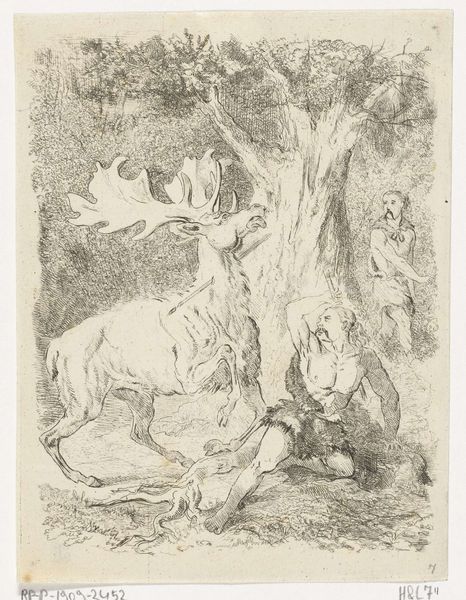
Dimensions: 4 9/16 x 3 in. (11.59 x 7.62 cm) (plate)13 1/8 x 10 1/16 in. (33.34 x 25.56 cm) (sheet)
Copyright: No Copyright - United States
Editor: So, this is Renoir's "Sur la plage," from around 1892, an etching printed on paper. It's at the Minneapolis Institute of Art. I’m immediately struck by how fleeting the image feels, like a memory fading at the edges. The figures seem almost ghost-like. How do you interpret this work? Curator: Well, etching as a medium lends itself to that ethereal quality, doesn’t it? Look at how Renoir uses the lines. Do you notice how they cluster and disperse, almost breathing life and then fading it away from the figures? They become vessels not of concrete identities, but of memory itself. Think of the beach, a timeless liminal space in visual culture. What feelings does that evoke? Editor: A sense of freedom and relaxation, definitely. Maybe even melancholy, a slight bittersweet feeling of summer's end. Curator: Precisely. That's partly due to the historical association of coastal regions as places for respite and leisure and the water itself acting as a transitional symbolic zone. Water often represents change, and emotional purging – think of ritual baptisms across many faiths. Also, notice that the bathers turn their backs on us, and that’s important. What is the effect? Editor: It creates a sense of distance. They're in their own world, undisturbed, lost in their experience. Curator: Yes, the figures inhabit their symbolic space, shielding it from the intrusive gaze. They are facing some truth for themselves. As such, in art the human back often suggests inwardness, reflection, something deliberately concealed from others’ attention. The act of not showing their faces becomes integral to Renoir’s portrayal. The etching then acts like a psychological mirror reflecting a state of mind. Editor: I never thought about it like that! Seeing them turn away made me focus less on who they were and more on what the *scene* means, and *how* it's rendered as emotion. Curator: Exactly. Through the image and composition of "Sur la plage," Renoir taps into potent themes about time, recollection, and individual inner experience using visual language. Editor: That’s fascinating – thank you for unpacking all those layers of meaning. I'll never see Renoir's work the same way again!
Comments
No comments
Be the first to comment and join the conversation on the ultimate creative platform.
